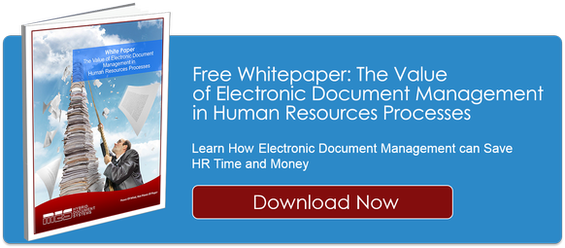 The primary argument forwarded to make a case about why HR automation software is a prudent business decision is efficiency: such a system improves manual, time-intensive processes and ultimately saves organizations money. Less commonly discussed, but equally important, is that these systems allow businesses to adhere to regulatory and organizational requirements. Boosting profitability is obviously a valid goal, but if a company or its employees fail to adhere to legislative or organizational rules, they many find themselves in hot water.
The primary argument forwarded to make a case about why HR automation software is a prudent business decision is efficiency: such a system improves manual, time-intensive processes and ultimately saves organizations money. Less commonly discussed, but equally important, is that these systems allow businesses to adhere to regulatory and organizational requirements. Boosting profitability is obviously a valid goal, but if a company or its employees fail to adhere to legislative or organizational rules, they many find themselves in hot water.
So how exactly does automating HR processes help ensure that such requirements are met? Here are just a few ways that HR automation can keep you and your company out of trouble.
Record Retention Requirements
In Canada, businesses, trusts and organizations are required to retain business records for a period of six years. This rule is no different for HR documents. Having staff means that you have to meet statutory obligations regarding the information you keep about them. These include personal information like age and social insurance number, as well as details of wages, vacations, overtime and more. It is legally required that this information is accessible for inspection for a period of six years. Failure to comply with these rules carries a penalty that can prove costly.
Due to the fact that record retention requirements are on-going and complex, recording, classifying and storing such information is challenging without an effective system. Automating record management processes helps ensure that your HR documents are accurate and meet the legal record retention requirements.
Payroll Processes
Record retention laws are not the only legal requirement that HR automation helps organizations comply with. Compliance to Canadian labour law is also a significant concern, and any mistakes made that lead to non-compliance can have an adverse impact on a business. Automating HR processes such as payroll and other employment-related aspects can help ensure that your organization is always in compliance. With HR automations software, things like vacation, absences, hours worked and overtime logs can be routed through to payroll sections where they can automatically calculate pay entitlement and adjustments.
Document and Information Security
Poor document and information security is of course another cause for concern. While not a regulatory necessity, lax information security can land your organization in a lot of trouble. From an organizational standpoint, it is prudent to ensure that your files and data are properly managed. By automating HR processes, you can ensure that information is readily available only to those who need it, as HR automation systems have advanced access restriction functionality. Furthermore, documents can also be filed with a built-in destroy date so that the system automatically deletes files when they are no longer needed. This helps ensure that sensitive HR information is more tightly controlled and stored more securely.
Ultimately, automating HR processes using an HR automation solution not only boosts productivity, it also helps ensure that both regulatory and organizational requirements. As a result, your business becomes more profitable while at the same time protecting itself from legal and regulatory risks.

